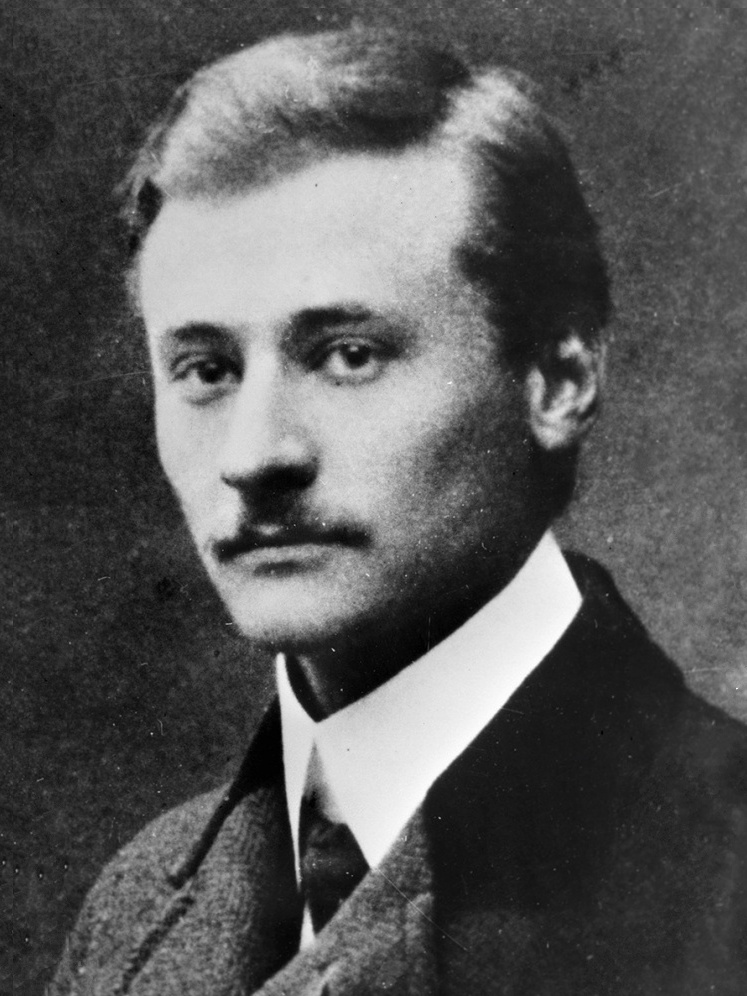Built the first liquid propellant rocket motor in the Soviet Union.
Fridrikh Tsander (or Tzander) was born on August 23, 1887, to a prosperous German-speaking family in Riga, Latvia, then part of the Russian Empire. His father, a physician, encouraged his son’s interests in both science and science fiction, and Fridrikh began a life-long fascination with the possibility of life beyond Earth. He also became interested in airplane gliding, and after 1903, read extensively about the powered flight achieved by the Wright Brothers in the United States. These interests led him to pursue a career in aviation engineering after graduating from the Riga Polytechnic School in 1907.
That year, Tsander read The Exploration of Space by Means of Rocket Devices by Konstantin Tsiolkovsky and began to shift his focus from airplanes to spacecraft. Beginning in 1919, while working at a motor aircraft plant in Moscow, he proposed the first systematic method for the early development of space flight, a planned program of three phases:
1. The analysis of the problems associated with space flight.
2. The development of rocket engine theory.
3. The building and testing of rocket engines.
Fridrikh Tsander believed that the multi-staged rocket was the key to space flight, and he worked on a number of designs for rocket airplanes. Within ten years of the beginning of his process, Tsander hoped to be able to design a rocket plane that could leave and enter the atmosphere on wings and while using jet propulsion to maneuver in outer space. He calculated trajectories of interplanetary travel that employed solar and planetary magnetism as well as gravitation and laid out a case for a thermonuclear rocket engine, a cherished dream of generations of space engineers.
In 1924, Tsander proposed the creation of a “Society for the Study of Interplanetary Travel” in Moscow, and such a group was soon formed as part of the Military Science Division of the N.E. Zhukovsky Air Force Academy. Tsander’s group was renamed the Society for the Study of Interplanetary Communications and was the first Soviet rocket society.
In 1924, Fridrikh Tsander was the first, along with Konstantin Tsiolkovsky, to propose the idea of using solar sails for spaceflight. He also suggested launching a series of Earth-orbiting space stations. Tsander became fanatical about the exploration of space and proposed sending a manned mission to Mars, as he explained, “Because it has an atmosphere and ability to support life. Mars is also considered a red star and this is the emblem of our great Soviet Army.”
In 1930, Fridrikh Tsander began working at the Moscow Institute of Aviation Machine Building, the first of two Soviet rocket development centers, (another was established two years later in Leningrad, headed by Mikhail Tikhonravov). He began experimenting with fuel engines using compressed air, and later, liquefied oxygen and in 1930, constructed and performed static tests on the first liquid propellant rocket engine in the USSR, the OR-1. This engine developed 11 pounds of thrust using compressed air and gasoline. His second rocket motor design, the OR-2, produced a thrust of 110 pounds using benzene and liquid oxygen.
In 1931, the Kremlin established the Jet Propulsion Research Group, or GIRD, directed by Tsander. Together, with his closest aide, Sergei Korolev, the future mastermind behind the Soviet space program, Tsander began work on a liquid-fueled rocket, the GIRD-10. On November 25, 1933, the first GIRD-10 was launched outside Moscow. It was not, however, the Soviets’ first liquid-fuelled rocket, as the GIRD-09, built by Korolev and Tikhonravov had flown three months earlier. The Soviet Union tested 118 types of rocket engines by the end of the decade, and in 1939, launched its first two-stage rocket, nine years before the Americans could claim such an achievement. As the Soviets often acknowledged, much of their early success was due to the vision of Fridrikh Tsander.
Unfortunately, Tsander died on March 28, 1933, in the city of Kislovodsk, before either GIRD rocket had flown. Vasily Mishin, Korolev’s successor, later assessed Fridrikh Tsander’s legacy: “Much of what he espoused decades ago offers answers to questions today. Modern space researchers draw on Tsander assessments of the effects of solar and planetary radiation on traveling spacecraft and on Tsander’s calculations of optimal trajectories for interplanetary travel.”
A crater on the Moon is named in honor of Fridrikh Tsander, and the Latvian Academy of Sciences awards an annual prize in physics and mathematics in his name.

